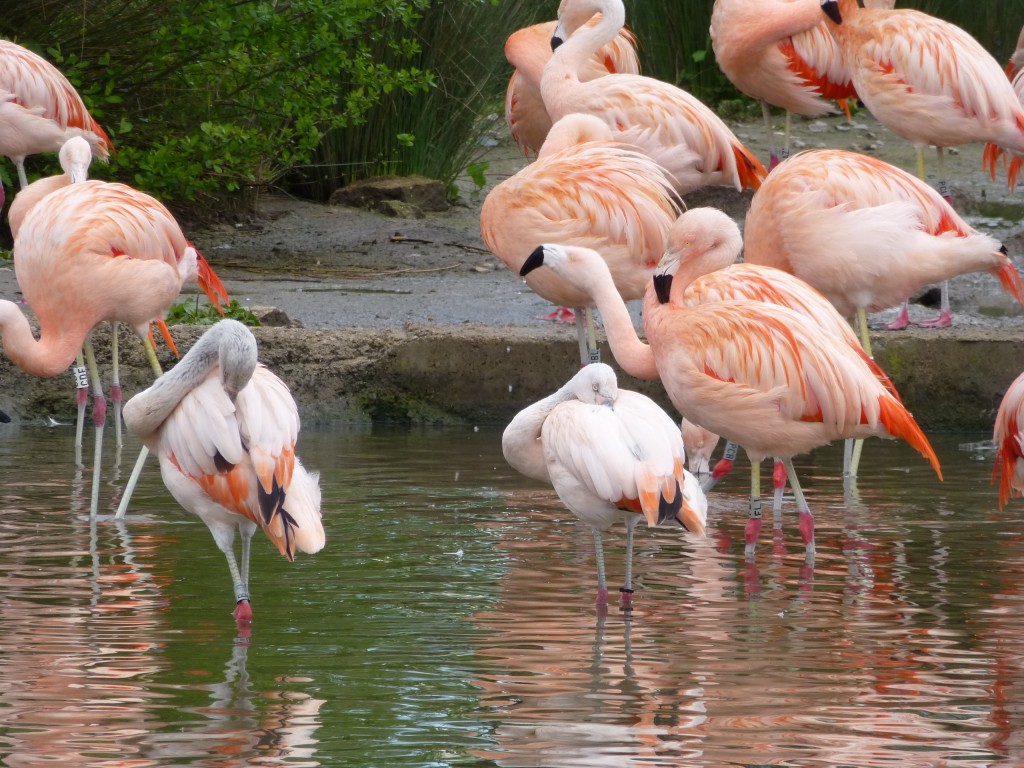Notable birds to look out for... the young Chileans.
The young Chilean flamingos that were hand-reared by the aviculture staff at WWT Slimbridge (Phoebe, Phil, Mark amongst them) back in 2011 are now big strapping individuals romping around the South American Pen with the rest of the adult Chileans in the 170-odd strong flock. They are still easy to recognise with their duller, less pink plumage and grubby grey legs that are just starting to develop the bright pink "knees" (actually ankles) that are so distinctive of this South American flamingo. If you do manage to spot them amongst the mass of pink, then spend a few moments observing their behaviour for you will get an interesting insight into flamingo natural history.

Young flamingos, as I have mentioned before, are kind of social outcasts from the rest of the flock whilst they are non-breeding, and these juvenile Chileans demonstrate this behaviour nicely. The thinking behind this rather strange behaviour- to not really have anything to do with the youngsters that you produce- is that because flamingos invest so much time, energy and effort in their breeding displays, any bird that is not beautiful and pink, and that does not look like an adult ready to partake in courtship is simply ignored. Juvenile birds, with their dull, lacklustre plumage, shades of grey and washed-out legs simply do not make the grade. They must wait two or three years until they "colour up" properly and will then appear useful to the rest of the flamingos in the flock they live with. So when you see the young Chileans hanging about in the shadow of the more beautiful grown-ups, don't feel too sorry for them, juveniles group together in their own little friendship clubs, the same as has been observed happening in wild birds. See if you can spot each youngster's preferred partner (aka flamingo best friend); the chances are, it will be a bird of the same age to it.
And there you go, another lovely example of how captive flamingos are really good educational exhibits and useful research subjects for us to learn more about how these fascinating creatures live out their day-to-day lives.


